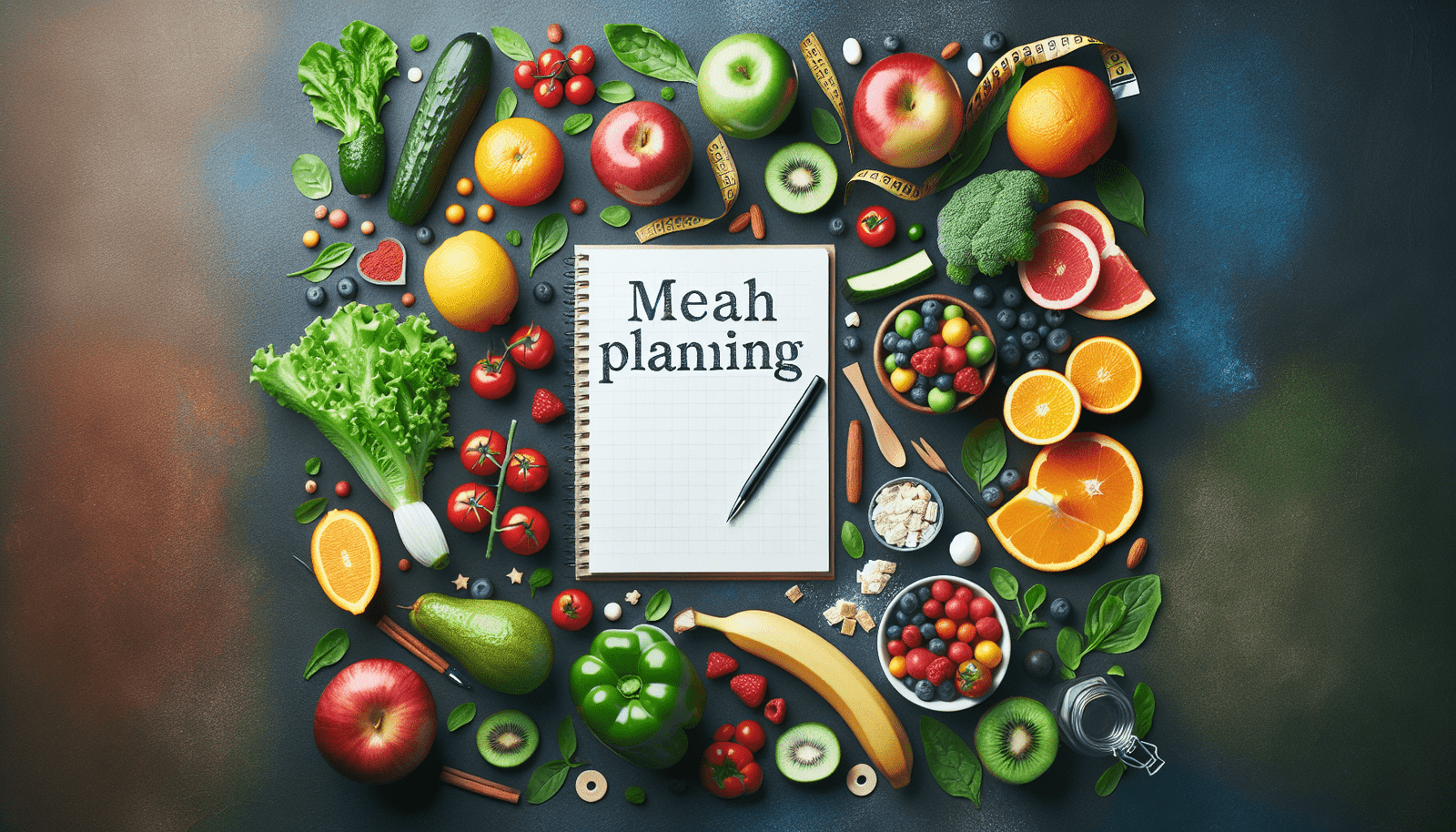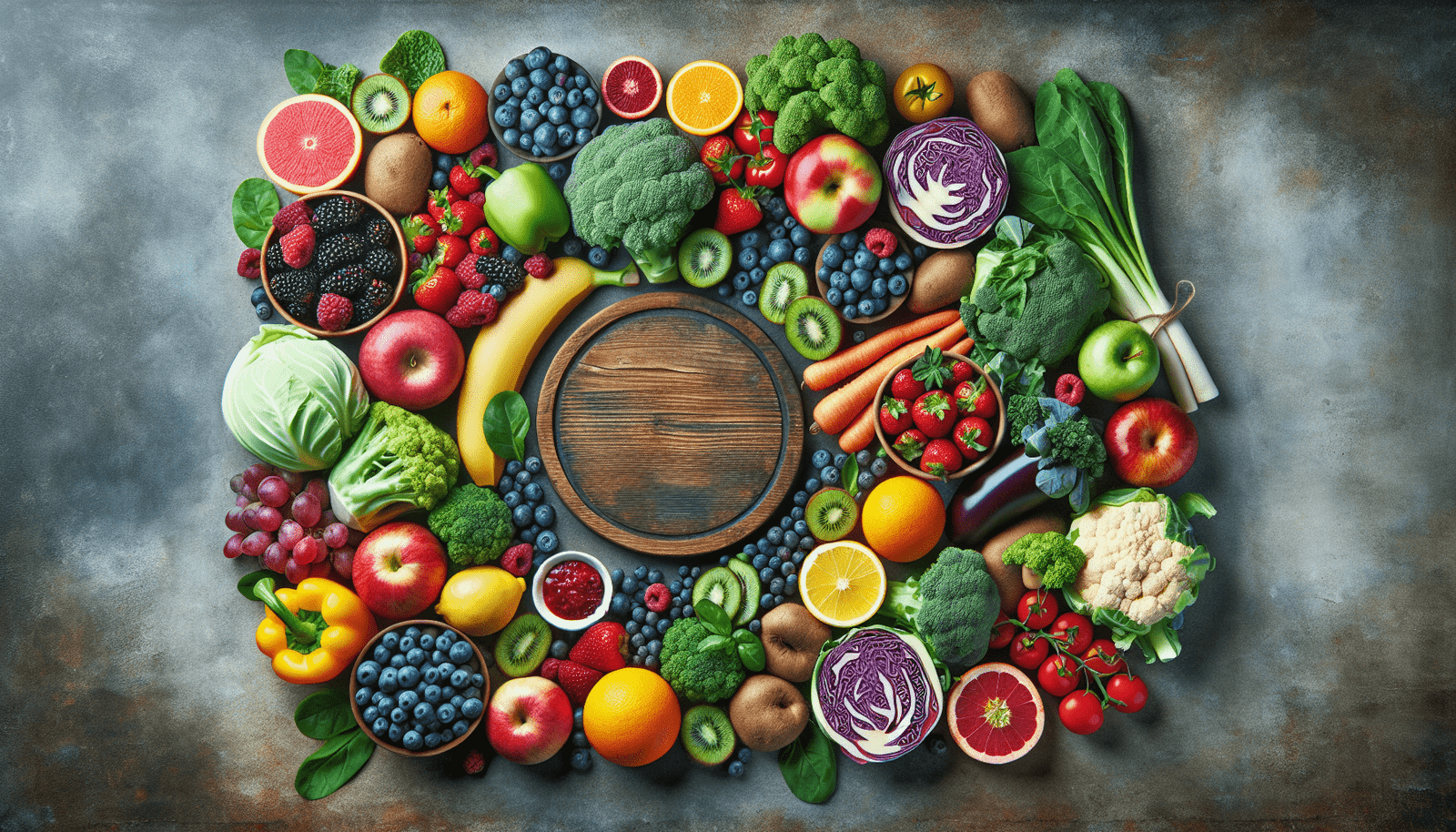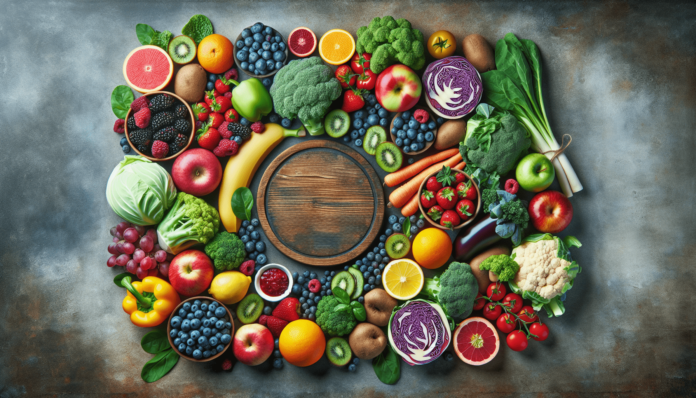Are you looking to shed some extra pounds and improve your overall health? Look no further! “Meal Plans For Weight Loss” is here to help you achieve your goals with delicious and nutritious meal plans designed specifically for weight loss. Say goodbye to restrictive diets and hello to a healthier, happier you. Our meal plans are carefully crafted to provide you with the perfect balance of proteins, carbohydrates, and fats, ensuring you feel satisfied while still losing weight. With a variety of mouthwatering recipes and easy-to-follow instructions, sticking to your weight loss journey has never been easier. Get ready to embark on a flavorful and fulfilling adventure towards a slimmer and healthier you!
1. Determining your caloric needs
Calculate your basal metabolic rate
Determining your caloric needs is an essential step in your weight loss journey. The first thing you need to do is calculate your basal metabolic rate (BMR), which is the number of calories your body needs to function at rest. There are various online calculators available that can help you determine your BMR based on your age, weight, height, and gender. This gives you a baseline idea of the number of calories you need to maintain your current weight.
Consider your activity levels
In addition to your BMR, you also need to consider your activity levels when determining your caloric needs for weight loss. If you lead a sedentary lifestyle with little to no exercise, you would need fewer calories compared to someone who is physically active. Take into account the number of hours you spend exercising each week and the intensity of your workouts to get a better estimate of your daily caloric needs.
Set a calorie deficit
Once you have calculated your BMR and considered your activity levels, you can set a calorie deficit to achieve weight loss. A calorie deficit means consuming fewer calories than your body needs to maintain its current weight. It’s generally recommended to create a deficit of 500 to 1000 calories per day, which can result in a gradual and healthy weight loss of 1 to 2 pounds per week. However, it’s important to note that you should never go below 1200 calories per day for women and 1500 calories per day for men to ensure you’re still receiving adequate nutrition.
2. Focus on balanced meals
Include lean protein sources
When it comes to creating balanced meals for weight loss, lean protein sources should be a priority. Protein helps keep you feeling full and satisfied, while also supporting muscle growth and repair. Incorporate lean meats such as chicken breast, turkey, or fish into your meals. If you’re following a vegetarian or vegan diet, opt for plant-based protein sources like tofu, tempeh, beans, lentils, and quinoa.
Incorporate whole grains
Whole grains are an excellent source of fiber, which aids in digestion and helps control hunger. When selecting grains, opt for whole grain options like brown rice, quinoa, whole wheat pasta, and whole grain bread. These provide more nutrients and less refined carbohydrates compared to their refined counterparts. Incorporating whole grains into your meals will help you feel fuller for longer, making it easier to stick to your weight loss goals.
Add plenty of fruits and vegetables
Fruits and vegetables should make up a significant portion of your meals for weight loss. They are low in calories, high in fiber, and packed with vitamins, minerals, and antioxidants. Fill your plate with a variety of colorful fruits and vegetables to ensure you’re getting a wide range of nutrients. Aim for at least five servings per day, and don’t be afraid to try new fruits and vegetables to keep your meals interesting and flavorful.
Include healthy fats
Contrary to popular belief, fats are an essential part of a balanced diet. Healthy fats provide energy, help absorb fat-soluble vitamins, and support brain function. Incorporate sources of healthy fats into your meals, such as avocados, nuts, seeds, olive oil, and fatty fish like salmon or sardines. However, it’s important to consume these fats in moderation, as they are calorie-dense. Be mindful of portion sizes when adding fats to your meals.
3. The importance of portion control
Use smaller plates and bowls
Portion control plays a crucial role in weight loss. Using smaller plates and bowls can trick your brain into feeling satisfied with less food. Studies have shown that people tend to eat more when they are presented with larger portions. By using smaller dishes, you can visually create the perception of a full plate while still consuming fewer calories.
Measure your food
To accurately control your portions, it helps to measure your food. Invest in a set of measuring cups and a kitchen scale to ensure you’re eating the appropriate serving sizes. Measuring your food not only helps you stay on track with your calorie goals but also provides a better understanding of portion sizes, making it easier to estimate your portions when dining out or eating at other people’s houses.
Be mindful of serving sizes
In addition to measuring your food, it’s essential to be mindful of serving sizes. Pay attention to the recommended serving sizes listed on food packaging and adjust your portions accordingly. It’s easy to unintentionally consume larger portions, especially when eating out or snacking on pre-packaged foods. By being aware and mindful of serving sizes, you can better control your calorie intake and work towards your weight loss goals.
4. Meal prepping and planning
Plan your meals in advance
Meal prepping and planning can significantly contribute to your weight loss success. Taking the time to plan your meals in advance helps you make healthier choices and prevents last-minute unhealthy food decisions. Sit down once a week and plan out your meals for the upcoming days. Consider your schedule, grocery list, and personal preferences to create a variety of nutritious and balanced meals.
Create a shopping list
Once you have planned your meals, create a shopping list based on the ingredients you’ll need. Stick to your list to avoid impulse purchases and unnecessary items. Shopping with a list ensures that you have all the necessary ingredients on hand, making it easier to stick to your meal plan. Additionally, having a well-stocked pantry and fridge reduces the temptation to order takeout or indulge in unhealthy snacks.
Batch cook for the week
One of the keys to successful meal prepping is batch cooking. Prepare larger quantities of food and divide them into individual portions for the week. This saves you time during busy weekdays and ensures that you have healthy meals readily available. Invest in quality food storage containers to keep your meals fresh and organized. You can also freeze some portions for later use if you prefer more variety.
Portion out your meals
As you batch cook your meals, be sure to portion them out to control your calorie intake. Divide the meals into individual containers, making it easy to grab a pre-portioned meal and go. This eliminates the need to guess or estimate serving sizes, ensuring you stay on track with your weight loss goals. It also allows you to take your meals with you to work, school, or other activities, preventing the temptation to grab fast food or unhealthy snacks on the go.
5. Incorporating regular exercise
Combine cardio and strength training
Exercise is an important component of any weight loss plan. Incorporating both cardio and strength training exercises helps you burn calories, build lean muscle, and increase your overall fitness levels. Cardio exercises like running, biking, swimming, or dancing can help you burn calories and improve your cardiovascular health. Strength training exercises, on the other hand, help build muscle, boost your metabolism, and improve your body composition.
Set realistic goals
When starting an exercise routine, it’s important to set realistic and achievable goals. Don’t expect to go from a sedentary lifestyle to running a marathon overnight. Start with small, attainable goals and gradually increase the intensity and duration of your workouts. This approach not only prevents burnout but also keeps you motivated and engaged. It’s crucial to listen to your body and give yourself time to rest and recover.
Find activities you enjoy
Exercise should be enjoyable to ensure long-term adherence. Find physical activities that you genuinely enjoy doing. Whether it’s dancing, hiking, playing a sport, or attending group fitness classes, incorporating activities you look forward to makes exercise feel less like a chore. Experiment with different activities to find what suits your preferences and fits into your lifestyle. Remember, the best exercise routine is the one you’ll stick to consistently.
Incorporate movement throughout the day
In addition to scheduled workouts, it’s important to incorporate movement throughout your day. Take breaks at work to stretch or walk around the office. Choose to take the stairs instead of the elevator. Park your car farther from your destination to get in some extra steps. These small changes can add up and contribute to your overall calorie burn. Being mindful of your daily movement helps you stay active, even on days when you may not have a formal workout planned.
6. Sample meal plan ideas
Breakfast
- Option 1: Spinach and mushroom omelet with whole grain toast.
- Option 2: Greek yogurt with berries and a sprinkle of nuts.
- Option 3: Overnight oats with chia seeds, almond milk, and sliced bananas.
Lunch
- Option 1: Grilled chicken salad with mixed greens, cherry tomatoes, cucumbers, and avocado.
- Option 2: Quinoa and vegetable stir-fry with tofu or shrimp.
- Option 3: Whole wheat wrap with turkey, lettuce, tomato, and hummus.
Snacks
- Option 1: Apple slices with almond butter.
- Option 2: Carrot sticks with hummus.
- Option 3: Greek yogurt with a sprinkle of granola.
Dinner
- Option 1: Baked salmon with roasted vegetables and quinoa.
- Option 2: Turkey meatballs with zucchini noodles and marinara sauce.
- Option 3: Stir-fried tofu or chicken with broccoli and brown rice.
Dessert
- Option 1: Fresh fruit salad.
- Option 2: Dark chocolate squares.
- Option 3: Greek yogurt with a drizzle of honey and sliced almonds.
7. Tracking your progress
Keep a food diary
Keeping a food diary can be a helpful tool in tracking your progress and staying accountable. Write down everything you eat and drink throughout the day, including portion sizes and any snacks or beverages. This allows you to see patterns, identify potential sources of excess calories, and make adjustments as needed. It also helps you become more mindful of your eating habits and choices.
Use a fitness app or tracker
In addition to a food diary, consider using a fitness app or tracker to monitor your calorie intake and track your exercise. These apps provide valuable insights into your daily calorie burn and help you maintain a balanced diet. Many apps also have features that allow you to set goals, create meal plans, and receive personalized recommendations. Find an app that aligns with your goals and preferences to make tracking your progress more convenient and enjoyable.
Measure your weight and body measurements
While weight is not the sole indicator of progress, it can be helpful to track your weight loss journey. Weigh yourself regularly, preferably once a week, under consistent conditions, such as in the morning before eating or drinking. Additionally, take measurements of your body, including areas like your waist, hips, thighs, and arms. As you progress in your weight loss journey, these measurements can provide a better understanding of how your body is changing, even if the number on the scale doesn’t reflect it.
8. Seeking professional guidance
Consult a registered dietitian
For personalized guidance and support, consider consulting a registered dietitian. A dietitian can assess your individual needs, preferences, and lifestyle to create a tailored meal plan that suits you. They can also help you navigate any dietary restrictions or food allergies and provide evidence-based advice. Working with a dietitian ensures you receive accurate information and helps you develop a sustainable approach to weight loss.
Work with a personal trainer
If you’re new to exercise or unsure about proper form and technique, working with a personal trainer can be beneficial. A personal trainer can design a workout plan that aligns with your goals and fitness level, providing guidance and motivation along the way. They can also teach you proper exercise techniques to prevent injuries and help you maximize your workouts. A personal trainer acts as a source of accountability and support, making your weight loss journey more structured and enjoyable.

9. Staying motivated and accountable
Find a weight loss buddy
Finding a weight loss buddy or joining a support group can make your journey more enjoyable and motivating. Having someone to share your successes, challenges, and setbacks with can provide a sense of camaraderie and accountability. You can swap meal ideas, exercise together, and cheer each other on. Whether it’s a family member, friend, or an online support group, having a support system can make a significant difference in staying motivated and accountable.
Reward yourself for achievements
Celebrating your achievements, no matter how small, is essential for staying motivated. Set milestones or goals along the way and reward yourself when you achieve them. However, it’s important to choose non-food rewards to avoid associating food with emotions or achievements. Treat yourself to a massage, buy a new workout outfit, or indulge in a hobby you enjoy. The key is to acknowledge your hard work and dedication, appreciating the progress you’ve made.
Seek support from friends and family
In addition to finding a weight loss buddy, seek support from your friends and family. Share your goals and aspirations with them, and let them know how they can support you. Having their encouragement and understanding can be incredibly valuable when facing challenges or temptations. Surround yourself with people who will uplift and cheer you on throughout your weight loss journey.
10. Remembering the importance of self-care
Get enough sleep
Sleep plays a vital role in weight management. Aim for at least 7-9 hours of quality sleep per night to support your weight loss efforts. Lack of sleep can disrupt hormone levels, leading to increased hunger and cravings. It may also affect your energy levels and motivation to exercise. Prioritize proper sleep hygiene, establish a relaxing bedtime routine, and create a conducive sleep environment to enhance your weight loss progress.
Manage stress
Stress can sabotage your weight loss efforts, so it’s important to find healthy ways to manage it. Engage in stress-relieving activities like yoga, meditation, deep breathing exercises, or journaling. Identify your stress triggers and develop strategies to cope with them effectively. When stress is managed, you’re more likely to make positive choices for your health and well-being.
Practice mindfulness and self-compassion
Lastly, practice mindfulness and self-compassion throughout your weight loss journey. Be present and aware of your body’s needs and signals. Listen to your hunger and fullness cues, and eat mindfully without distractions. Embrace self-compassion by being kind to yourself and avoiding negative self-talk. Weight loss is a journey, and there will be ups and downs. Remember that you are making positive changes for your health and well-being, and every step forward is an accomplishment.
In conclusion, achieving weight loss requires a holistic approach that combines a balanced diet, regular exercise, portion control, and self-care. Determining your caloric needs, focusing on balanced meals, practicing portion control, and meal prepping can set the foundation for success. Incorporating regular exercise, tracking your progress, seeking professional guidance, and finding motivation and support can further enhance your weight loss journey. Remember to prioritize self-care, get enough sleep, manage stress, and practice mindfulness and self-compassion. By following these comprehensive strategies, you can effectively pursue your weight loss goals while maintaining a healthy and sustainable lifestyle.









